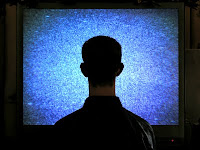The Internet is a part of today’s culture that many teenagers cannot even imagine what the world was like before the Internet existed. The Internet is fun, informative and a great source of communication with others. It's an educational tool and users can learn about almost anything. Sharing information through Internet is easy, cheap and fast. Teenagers have access to billions of websites containing information in the form of text, pictures and videos.
The internet like other technology has positives and negatives effects on teenagers. Teenagers have access to pornography, obscenities, and ways to make drugs, bombs or even participate in online sexual practices. Teenagers can also become heavily addicted to the internet, which can often lead them into depression, with little or no face-to face time with others. There are also issues with teenagers hacking into school databases, banks, government websites, friends or strangers computers. If your teenagers are spending too much time on the internet, they are at risk of getting involved with one of these activities. Our blog will discuss pros and cons of internet usage among teenagers.
Online Education
Online education does have an impact on the lives of students; online learning can contribute to a gain in self-discipline. Educational goals can be reached by getting an online education. Student’s become more computer savvy from continuously using technology to do research, type assignments, and use specific software to complete projects. Some online programs even offer fast-track programs that allow prospective graduates to complete degree programs faster.
(Read more)
Currently, most high school students in North America have access to the internet in their classroom setting. Student can get extra helps through online learning environments (OLE) provided by schools. OLE provides students quick and easy access to course resources and material. Most OLE environments are virtually available from any location that has a computer and internet. The OLE resources usually include: online books, lectures, instructor help, peer-to-peer support, technology support, multimedia activities, instant updates, self-testing applications, comprehensive reviews and much more! Students that have fallen behind can take extra help online to achieve their required credits.
Internet a Job Search Tool
The internet is an excellent online job search tool for teenagers to find a job. Teenagers can search different types of jobs through various job search engines i.e. Craigslist, Monster, Workopolis and Job Bank. These search engines can teach you to fill out an application, create a resume and prepare for an interview. You can apply for the required job through Internet, which is more direct and easy. Jobs can help teenagers feel more confident and independent which can help teenagers explore potential career paths.
Communication and Online Social Networking
Teenagers can communicate with each other through Internet chatting, video conferencing, e-mail or internet telephony. For this purpose, different services are provided on the Internet such as Facebook, MSN, Skype, Twitter, Hotmail etc…
Teenagers spend a significant amount of time everyday on the internet on networking sites. Teenagers use social networking sites to share information with others, connect with friends, create new friends, send messages and comment on others’ profiles pages. However, teenagers may become addicted to these networking sites and can be exposed to legal repercussions. Most teenagers create at least a basic profile, with their name, age, status, photos and interests, but many go much further. It's far too easy for predators to find victims using online social networking.
Internet and health issues among teenagers
Teenagers who spend most of their time on internet have an increased risk of smoking, drug and alcohol abuse, poor school performance, and early sexual activity due to higher media exposure.
A recent study has revealed that teenagers who use the Internet pathologically are more likely to develop depression than those who don’t. Pathological (uncontrolled or unreasonable) use of Internet has been associated with relationship problems, physical ill health, aggressive behaviors and other psychiatric symptoms.
(Read more)
Instant Messaging (IM) affects linguistic among teenagers
Instant messaging (IM) is a form of real time direct text based communication (Chatting) through computers or cell phones with one or more individuals while connected to the Internet. It is an extremely fast-growing communications medium, especially among teenagers. Teenagers use IM on a frequent basis often use bad grammar, poor punctuation, and improper abbreviations which affects their academic writing.
Recommendations:
- Limit the time your teenager spends on the internet
- Disconnect the router
- Turn the machine off
- Use technology to restrict access on the web
- Have family sessions- bring the computer out in the family room so everyone is involved
- Don’t allow an internet connection in your teenager’s room
- Become a safety sleuth- observe these websites for yourself
- Give them alternatives to boredom i.e. positive outlets through family centered alternatives
- Join them- listen and become involved
- Discuss with them what they are watching
- Change locations- move computers to a common area












